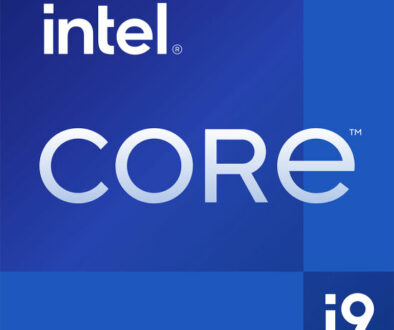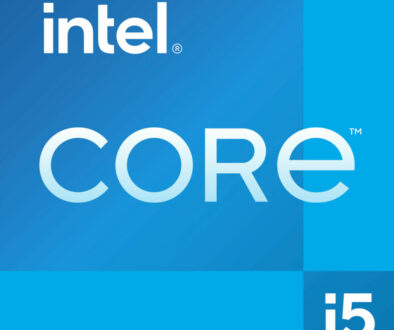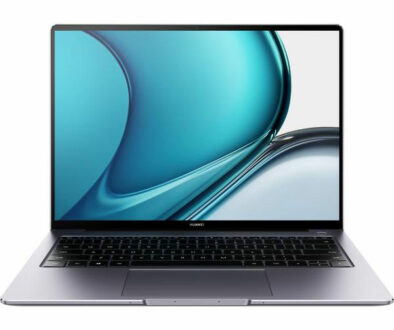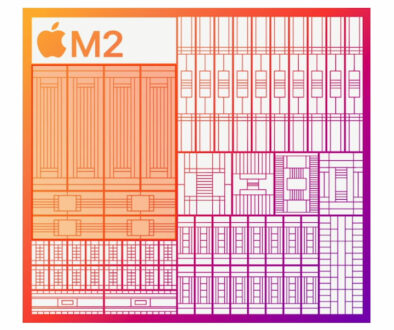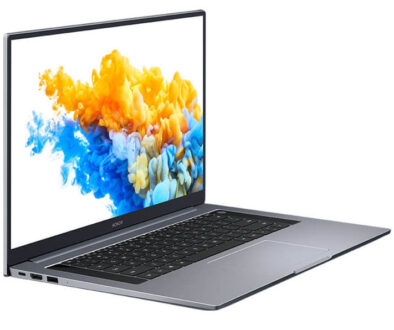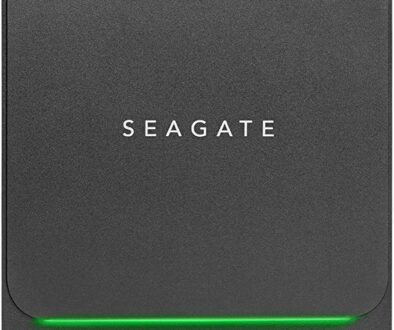Intel Arc Project is Confirmed. What We Know So Far
For gamers, the convention has always been choosing between AMD and Nvidia for their graphics requirements. Over the years the red and green teams have been at loggerheads with both companies continuously pumping out graphics cards with improved technology and expertise. Nvidia’s RTX 30 series graphics cards come with path-breaking Ray Tracing technology while AMD has rocked team green by replicating the DLSS with its Fidelity FX Super Resolution technology. The hegemony of these two giants is all but set to change a new player is gearing to enter the market now.
The Third Option
Welcome Intel Arc. With an official announcement done, it’s all but confirmed that Intel is about to change the game of the seasoned gamers. Intel is ready with a strong portfolio of at least four platforms for discreet graphics cards, the first which it plans to launch in the first quarter of 2022. With the blue team in the final phases of developing their first silicon for discreet graphics solution, the RGB trident finally seems to be complete. Here is what we know so far about the Intel Arc Project.
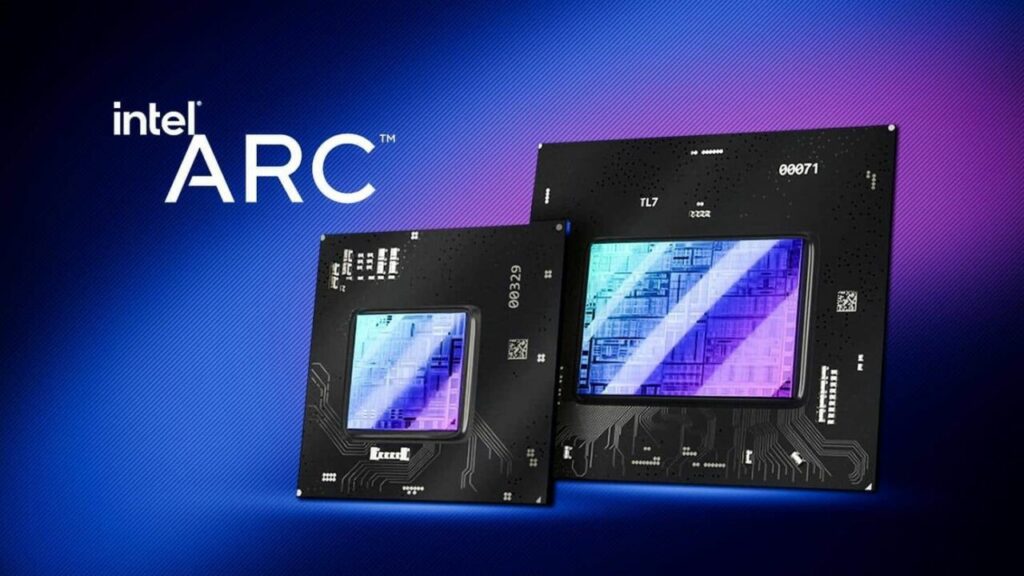
The Beginning
After a few failures with discreet graphics cards, Intel finally hit gold with its Xe architecture. Realizing the potential of this new architecture and the family of microarchitectures based on the Xe such as the Xe LP, Xe HP, Xe HPC and Xe HPG, Intel began assembling a team in 2018 intending to develop discreet graphics cards that could rival AMD and Nvidia.
Intel started testing the first Xe-based discreet GPU in October 2019, intending for a launch by the end of 2020. As aimed, within a year, the Xe DG1 (Discreet Graphics 1) was ready and being shipped as DG1 SDV for desktops and Iris Xe for laptops. The DG1 card was almost as fast as the Radeon RX 550 with high benchmark scores.
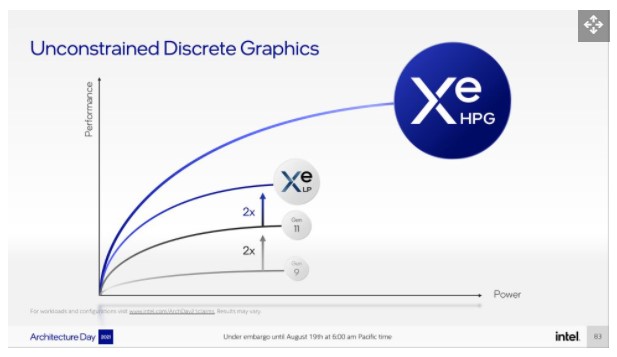
A faster and more powerful version of the Iris Xe, the Xe Max was launched and made available initially on just a handful of laptops featuring Intel Tiger Lake processors. It has dedicated memory and TDP requirements like any other discreet GPU and is a direct competitor to Nvidia’s MX Series laptop GPUs. Riding on the success of its Xe architecture, Intel spoke of a DG2 variant that was aimed at taking on mainstream AMD and Nvidia cards.
Intel DG2 Christened as Intel ARC
19th August is sure to be etched on to history as the auspicious day when Intel officially announced the Arc Project. The DG2 development which was being done on the Xe HPG (High-Performance Gaming) microarchitecture of the Xe GPU family was codenamed as Alchemist much like RDNA/RDNA2 of AMD and Ampere of Nvidia.
Intel also announced specific timelines for the release of Intel Arc-powered graphics cards on the Alchemist and a roadmap of Arc’s future in the form of upcoming microarchitecture Xe2 Battlemage, Xe3 Celestial and Xe Next (completely new architecture) Druid. Intel has sounded the bugle; it is up for blood.
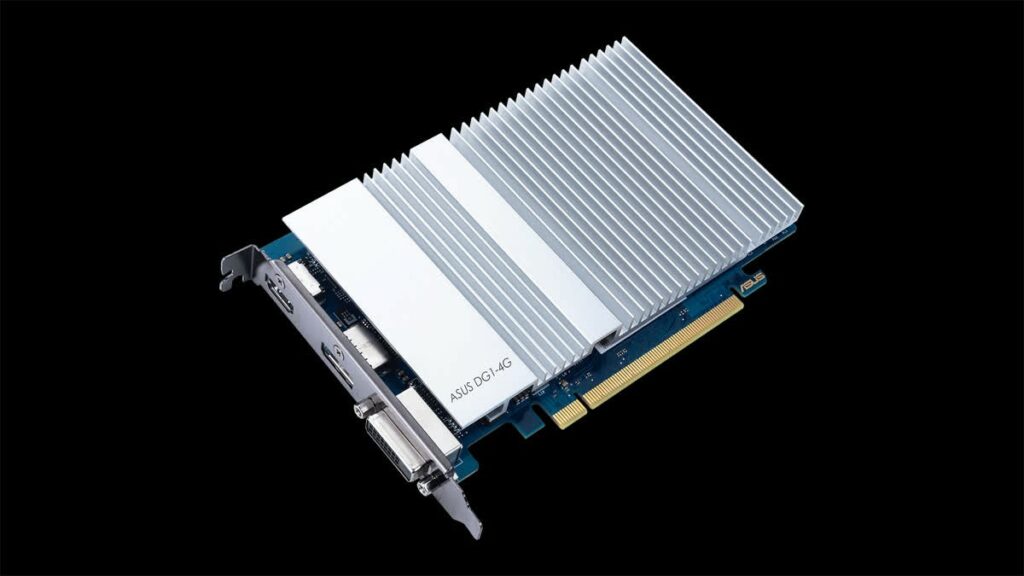
Dissecting Alchemist: It’s Potential
With a lot of talk hailing the Alchemist as a game-changer in the graphics card industry let us look at what the Xe HPG microarchitecture brings to the table.
Alchemist, previously known as Discreet Graphics 2/ Xe HPG architecture will now be manufactured by Taiwan Semiconductor Manufacturing Company or TSMC on an optimized 7nm process called the N6. The die is supposed to be extremely efficient as seen on most processors manufactured in this space. Alchemist will support hardware-based Ray-Tracing, AI-Based XeSS or Super Sampling that is equivalent to Nvidia’s DLSS and AMD’s Fidelity FX Super Resolution and Direct 12 Ultimate. It will be fully equipped to support Overclocking along with the latest Display Port 2.0. With a lot to offer, there are big reason for the old players to worry.
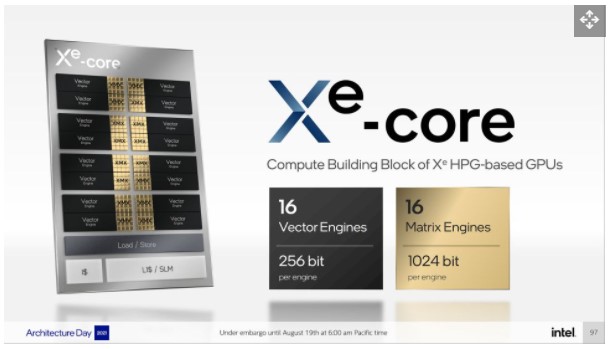
Alchemist uses the Xe HPG microarchitecture which takes cues from all the other microarchitectures of the Xe family to provide excellent value for money performance. Each Xe Core in the Xe HPG contains 16 matrix engines along with 16 vector engines.
The Xe-core is just a single building block used in Intel’s Arc GPU. A level up from the Xe-core is called a render slice that contains four of these Xe-core blocks totalling 64 Vector and 64 Matrix Engines in a slice.
Then there is additional hardware that includes four ray tracing units, one in each Xe-core, geometry and rasterization pipelines, pixel backends or ROPs and Texture Mapping Units. Each renders slice should contain 32 TMUs and 16 ROPs. The ray-tracing units are capable of managing ray traversals along with bounding box intersection and triangle intersection.
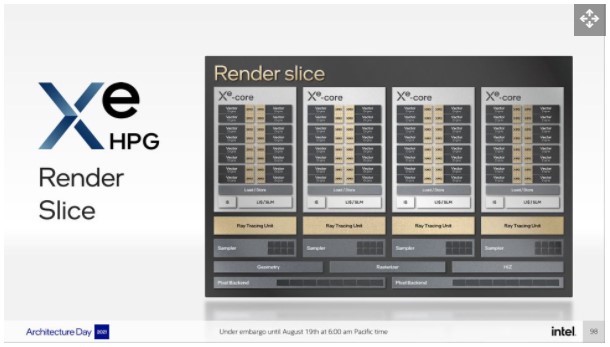
Finally, to create the entire GPU, Intel makes use of multiple render slices with the L2 cache and the memory fabric all in the same die. Then there are video processing blocks and output hardware that take up additional space on the GPU. The highest configuration of the Arc Alchemist GPU will have up to eight render slices.
Raja Koduri from Intel came up with a wafer of Arc Alchemist chips on Intel Architecture Day. Based on the calculation by experts, there will be a larger Arc die of around 24×16.5mm (~396mm^2). Although that does not translate to be a massive GPU, it is still better than AMD’s Navi 22 that measures 335mm^2, and close to GA104 of Nvidia that is sized at 393mm^2. Intel’s smaller manufacturing process of the Xe HPG could give it an edge over the seasoned players. Intel might have entered the race late but with excellent R&D it is already close to its competitors.
Perhaps die size alone doesn’t count much for great performance, but it is a good indicator of how much power can be crammed into a design. With around 400mm^2 of chip size, Intel intends to trade blows with at least the lower variants of RTX 30 and RX 6800.
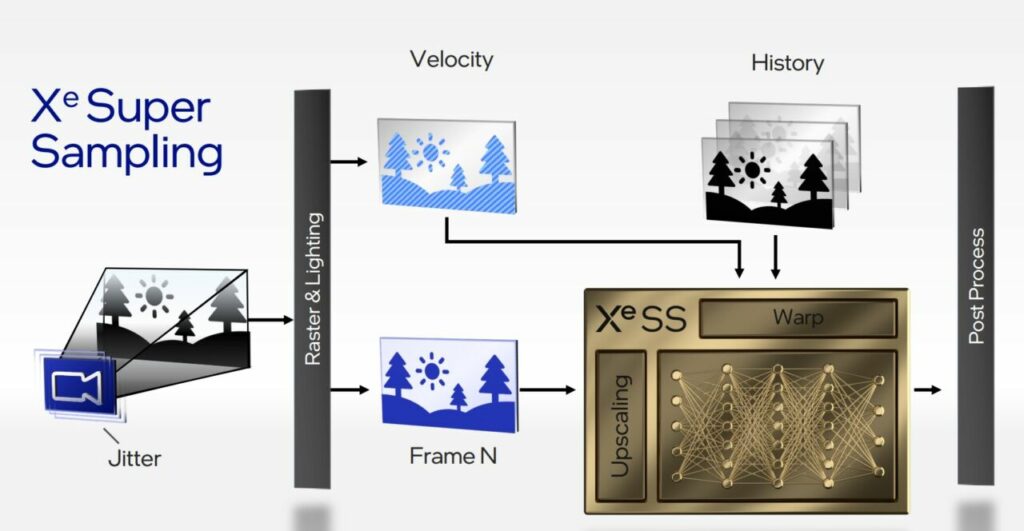
Intel also came up with two die shots for the Xe HPG indicating at least two different GPU dies in the making. The larger die comes with eight centre clusters correlating to eight render slices. There are four 64-bit memory interfaces along the bottom edge and bottom halves of the left and right edges totalling to a 256-bit interface. Filling up rest of the space is a bit more nebulous stuff mainly for video encoding/decoding, display outputs, etc.
With this 256-bit interface, Intel is probably following AMD’s lead to use a 16Gbps memory module. Intel’s Arc GPUs now have the same interface width as Nvidia’s RTX 3060 Ti/3070/3070 Ti cards and also AMD’s Navi 21. The smaller die seems to have just two render slices allowing just 128 Vector Engines. This will probably be an entry-level chip with a 96-bit memory interface.
The smaller chip might be slower than all or most of the current generation RX 6000 and RTX 30-series GPUs but it gives Intel a big upside as one render slice should come up to around 4.1–4.9 TFLOPS of computing depending on the clock speed. The performance would still match or even exceed the GTX 1650 Super and if Intel crams in at least 6GB of memory, the entry level gamers could have gold in their hands with the cheaper Arc. Especially since AMD or Nvidia currently do not have any true entry-level/budget cards in their portfolio with the latest features.
Memory Woes
Intel has been silent on the memory configuration. There are strong rumours of using GDDR6 memory with a capacity of 16GB. The reason for that is GDDR5 maxes out at 8GB which is too little for demanding gamers and content creators. What is certain however is that there would be multiple Alchemist-powered GPUs in different budgets with varying capabilities targeting enthusiasts, mainstream and professional gamers. However there has to be some budget variants using the GDDR5 engine for those who want to try out the Arc card before breaking the bank, after all even with the brand name, Intel Arc is a new entrant in the discreet graphics business.
Some have speculated that the HBM2e is a potential solution that substantial increases memory bandwidth in place of GDDR6 in some models but that would take costs up the roof. Moreover, none of the Xe HPG chip shots show HBM memory. Yet the rumours refuse to die.
As per the data released by Intel, of the multiple chips in development, the larger chip could have eight 32-bit GDDR6 channels allowing a 256-bit interface to the top variant. That also means we could have an 8GB or 16GB GDDR6 memory for the top model. The cheaper variants could see the interfaces trimmed down to 192-bit and 128-bit interfaces with the cheapest one to come with a 96-bit interface and 6GB of GDDR6 or GDDR5 video memory.
Availability and Mining
There is a global chip shortage and graphics cards prices have skyrocketed thanks to cryptocurrency mining. Hence, there are two questions important here, how good would Intel’s Arc GPUs be at mining and would they be available for the gaming community. To answer the first question, Intel is tight-lipped about the mining potential of their GPUs. We can assume that with data centre roots present in the Xe HPG architecture (as improvements from the Xe HP/HPC for Machine Learning and High-Performance Computing) there are possibilities that the Arc GPUs would be good at mining. Even without marketing statements, Intel showcased a collage that had the word Crypto Currencies and the image of a Bitcoin. There are ample scopes of speculation open.
From what can be concluded about the structure and components of the dies Intel is developing, Arc would manage Ethereum mining at close to 60 MH/s but only on 8GB plus GDDR6 cards. There might be some additional features too that would boost mining performance and make the GPUs at par with RTX 3060 Ti and RTX 3070.
Next is availability and the announced launch period is the first quarter of 2022. It seems thoroughly unlikely that Intel would be able to meet its commitment due to the chip shortage. The latest graphics cards announced by AMD and Nvidia are yet to feature fully-fledged on most offline and online stores. There is a dire shortage of chips and AMD is losing its market share every day as it is not able to keep supply lines open. 3 years old graphics cards are being sold at double their original prices and the GPU market is a bloodbath right now with experts predicting the situation to remain the same until the crypto bubble bursts or stabilizes by the middle of 2022.
Conclusion
After two failed attempts, the Arc is like a third bite of the cherry for Intel and from all the theory and numbers presented on the Intel Architecture Day, Intel might have struck the right notes this time. Its manufacturing issues are clearly visible with TSMC manufacturing chips for a company that abolished making mainboards to focus on chip-level work.
No doubt that Intel is the big underdog here and an overpricing strategy may not work again. It has to work on low-profit margins initially along with superb value for money offerings to build a base strong enough to challenge the red and the green team. Next, there is the tedious task of getting third-party manufacturers like Msi, Evga, Gigabyte or Asus on board with their GPU chips.
With Arc, Intel has announced its arrival but its stay will be decided by the implementation of the advanced features it has promised and the gaming community has got used to, namely Ray Tracing and Super Sampling. The pricing could be the single most decisive factor as competitive pricing would just make users choose tried and tested cards in comparison to new products.
We would advise gamers to not get overwhelmed at this news and focus on this space for detailed reviews of the actual cards with their designs and real-world performance numbers when they launch.


